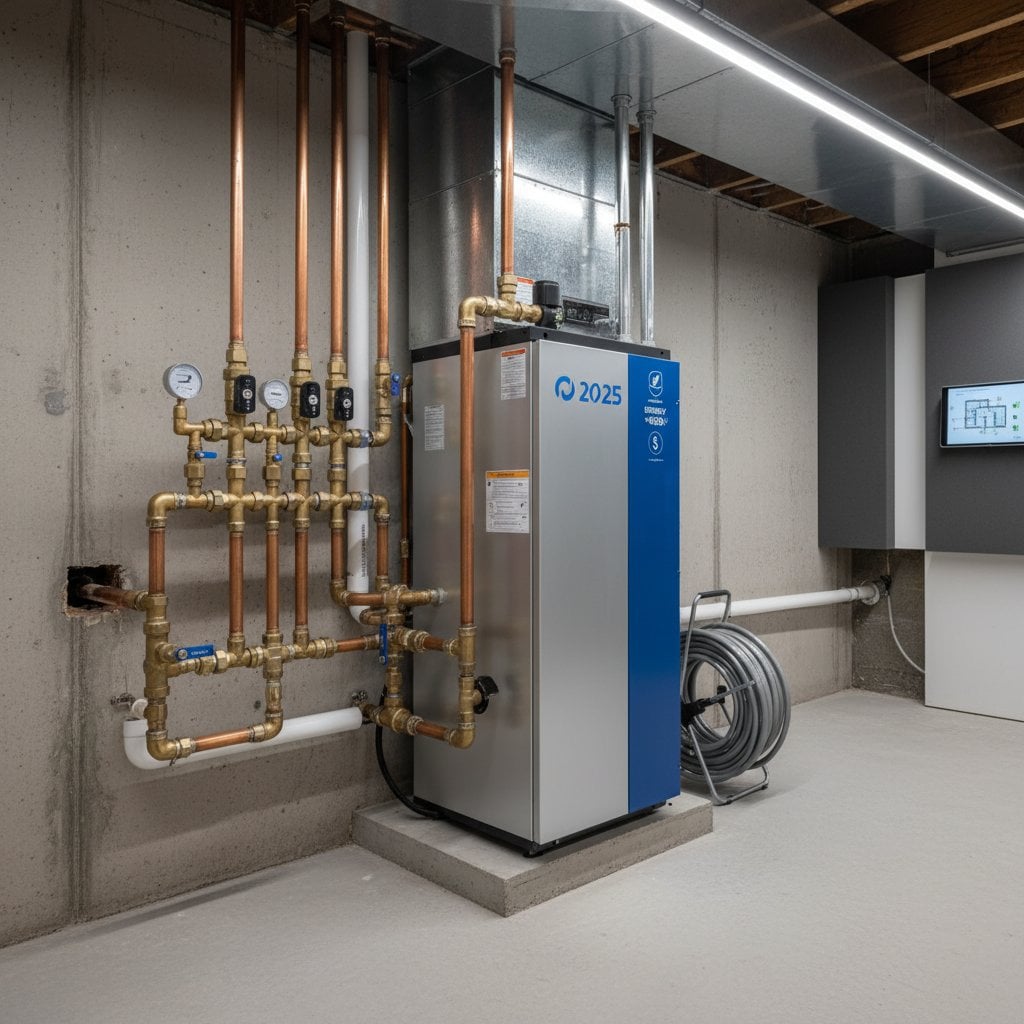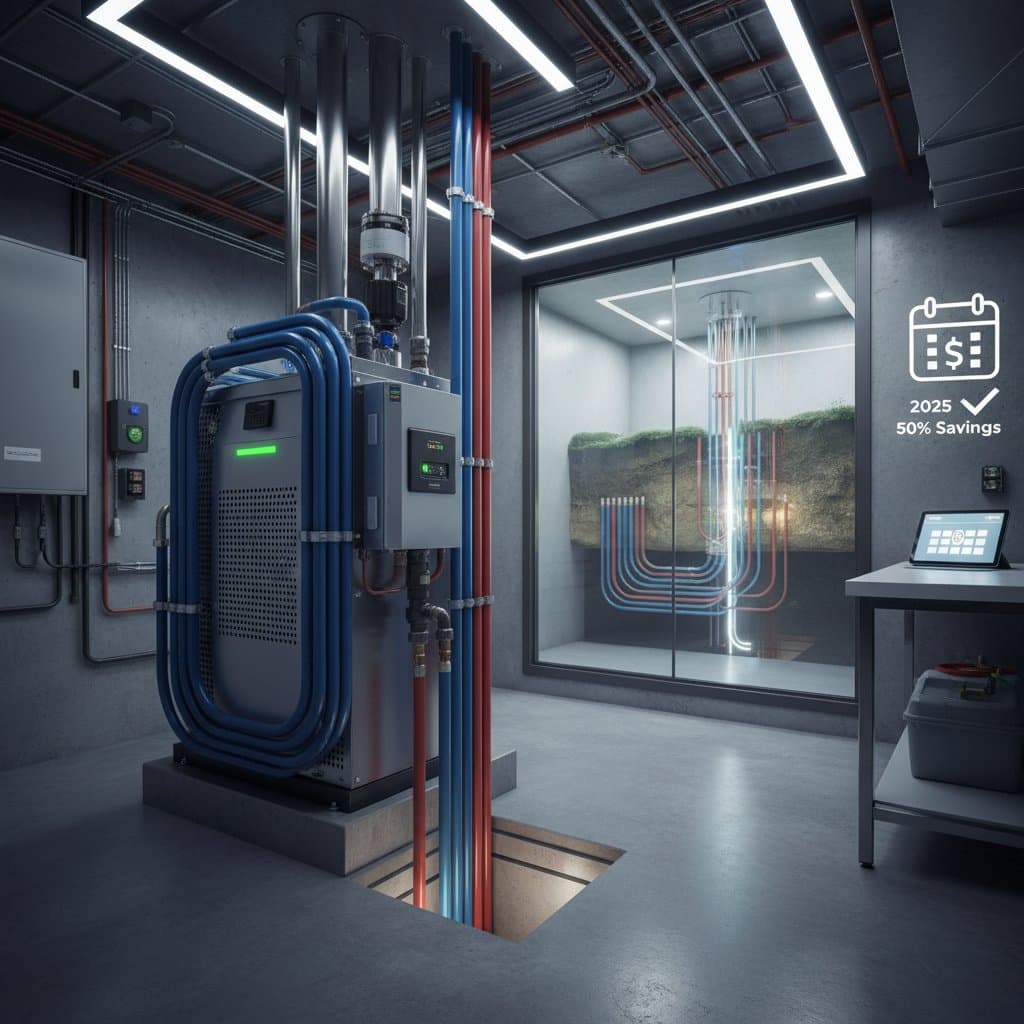Understanding the Surge in Geothermal HVAC for 2025
Homeowners seek ways to lower energy bills while preserving comfort levels. Geothermal heating and cooling systems, previously seen as specialized options, now attract widespread attention for their dependable operation, enduring savings, and eco-friendly benefits. Several factors fuel this growing adoption.
Essential Benefits at a Glance
- Geothermal systems lower heating and cooling expenses by up to 65% relative to conventional setups.
- Federal and regional incentives substantially decrease installation expenses.
- Ground-source heat pumps outlast air-source alternatives, frequently operating beyond 25 years.
- Progress in drilling methods and loop arrangements shortens setup durations and enhances output.
- Steady subsurface temperatures ensure elevated efficiency across all seasons.
Factors Driving Geothermal HVAC Adoption
Geothermal HVAC systems faced challenges for years, including high initial expenses and installation complexities. Recent developments alter this outlook. Enhanced drilling equipment and adaptable loop layouts now accommodate diverse property types, from spacious suburban areas to limited urban spaces.
Vertical loops suit properties with restricted land, while horizontal and pond configurations work for larger or water-adjacent sites. The U.S. Department of Energy reports that ground-source heat pumps achieve 300 to 600 percent efficiency even during extreme cold. In contrast, air-source systems often perform at less than half that level under similar conditions. This leads to consistent indoor environments, decreased energy consumption, and reduced emissions.
Financial advantages further accelerate interest. Numerous local authorities and utility providers extend rebates covering up to 30 percent of installation fees. Paired with diminished ongoing expenses, these measures enable most owners to recover their investment within a decade.
Geothermal Versus Traditional HVAC Systems
| Feature | Geothermal Heat Pump | Traditional Air-Source System |
|---|---|---|
| Efficiency | 300–600% | 175–250% |
| Lifespan | 25+ years | 12–15 years |
| Maintenance | Low | Moderate to High |
| Operating Cost | Low | Moderate to High |
| Environmental Impact | Minimal | High |
The table above illustrates the compelling reasons for transition. Although geothermal installations involve greater upfront investment, the sustained advantages prove compelling. The system draws on the earth's stable temperatures to deliver heating during winter months and cooling in summer, ensuring reliable performance.
Core Technology Powering Geothermal Systems
Geothermal heat pumps employ a water-based fluid circulated through buried loops to transfer heat with the earth. During winter, the setup pulls warmth from the ground to heat interiors. In summer, it expels excess home heat into the soil, bypassing the drawbacks of variable outdoor air.
Innovations enhance usability. Variable-speed compressors adjust output for optimal energy use, and intelligent thermostats enable fine-tuned climate management. Modular loop designs facilitate quicker setups on varied terrains. Increased availability of certified installers also trims labor expenses and accelerates timelines.
Steps to Implement Geothermal HVAC at Your Property
Begin the process with a professional energy audit to evaluate your home's needs and project savings. This step identifies the appropriate system capacity and highlights efficiency opportunities. Then, investigate rebates via regional energy initiatives; many programs pair with favorable financing options to ease initial outlays.
Installation typically spans a few weeks, depending on site conditions. Post-setup, maintenance remains straightforward, involving periodic fluid and filter inspections. Without exposed outdoor units, the system operates silently and resists weather damage.
Realizing Long-Term Gains from Geothermal Investment
Geothermal HVAC addresses frustrations with volatile utility rates and fleeting equipment durability. Property owners benefit from a robust, future-proof approach that integrates seamlessly into daily life. As adoption grows, this technology solidifies its place as a cornerstone of efficient, sustainable living.









